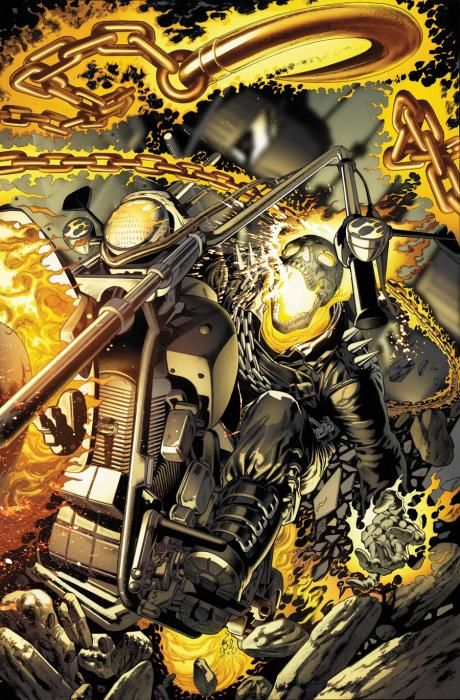This is exactly what the "Point One" initiative from Marvel should be. You can catch a sample of what I'm talking about in the preview we've got right here on CBR. Caught it? Good. Now as I was saying, this is what should happen in a "Point One" book: introduce the character, his powers, and origins. Provide a sample of the character's voice. Leave the character at the end of the book with a cliffhanger (or near-cliffhanger) ending that really makes the reader want to come back.
Rob Williams and Matthew Clark do just that with Ghost Rider.
My first exposure to Ghost Rider - and comics, in general - came from "Marvel Team-Up" #58, which featured Spider-Man and Ghost Rider. Mom brought that issue home - coverless - from a trip to the grocery store on a hot summer day, not unlike this one. I knew Spider-Man from the replays of the 1960s cartoon on the local stations. The flaming skeleton guy, though, he was new. I only recently re-discovered what issue that was thanks to an interview about this book.
Ghost Rider in that "Marvel Team-Up" - and in this book - is the original (at least in my frame of reference) Johnny Blaze. Williams gives us the lowdown on Johnny Blaze through Johnny's own words as he drowns his sorrows at a local watering hole. For such a downtrodden character, Johnny (through Williams' writing) is an engaging character to read. That inner monologue from Johnny gives us a recap of his origin, his deal with Mephisto, his bond with Zarathos, his disappointment at constantly being swindled, and his expectation to continue to be swindled.
Naturally, and almost predictably, Johnny gets approached for another deal. With the Ghost Rider in the picture, however, deals aren't what they seem. That is what makes the story compelling and gives it legs (or wheels) to run on. Heck, Johnny Blaze almost becomes a likeable character by the end of this issue.
Matthew Clark, meanwhile, seems to be turning in the work of his career. This issue is filled with demons, vampires, and more, from the adobe tile roof on the house of the lady who Johnny saves (or vice versa) to the bottles of liquor lined up behind the bar. Clark gets the whole photo-referencing thing right, balancing the real with the fantastic and making this a better comic book for his efforts. It really pays off, as Clark's motorcycles look real, selling Johnny Blaze and his flaming-skull head to all of us readers even more.
This book is not without its flaws, however. The biggest problem is that cliffhanger I mentioned earlier. Remember that? This one really changes things up a bit for Ghost Rider. Yet somehow, it makes the book that much more of a solid read that makes me want more. Now.

